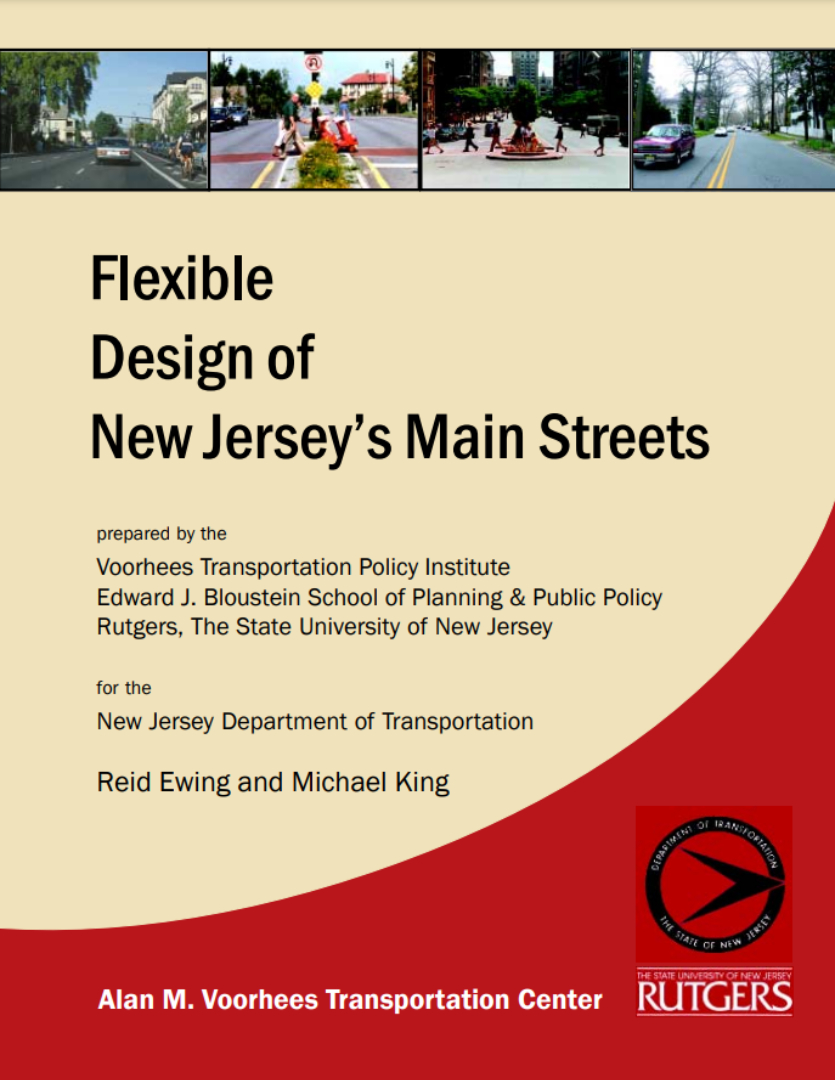This 2002 report provides an investigation of possible changes in design standards for highways passing through New Jersey communities. Through case studies and surveys, the study team discovered a burgeoning national movement away from strict reliance on highway design templates and toward flexible highway design, especially in the Northeastern and Northwestern United States. The movement seems rooted in the notion that the nation’s highways are essentially complete, and working with existing roadways will require special sensitivity to context.
It has been said that 95% of problem solving is properly defining the problem. If the problem is defined as the need to move traffic quickly through a community, it will lead to one set of design solutions. If the problem is defined as the need to preserve livability in the face of growing traffic, it will lead to another set of design solutions. The innovative designs proposed by engineers during the New Jersey Department of Transportation’s (DOT’s) Context-Sensitive Design Training Course show that different problem definitions can lead to very different design solutions. The Voorhees Transportation Policy Institute (TPI) study team is proposing a series of policy and practice changes that would add flexibility and context sensitivity to DOT’s design process for main streets. The proposals span the highway design process, from planning to final design, for it is at many points along the project pipeline that roadway design can be influenced. Modest changes in geometric standards are also proposed for main streets to add flexibility and context sensitivity.
Recommendation highlights include:
- Establishment of broad purposes and measurable objectives for main street projects,
- Selective reclassification and de-designation of main streets,
- Context-sensitive design exceptions on main streets,
- Use of Main Street Overlays to relax particular design standards on main streets, and
- Development of traffic calming guidelines to take context-sensitive main street design to the
next level.
